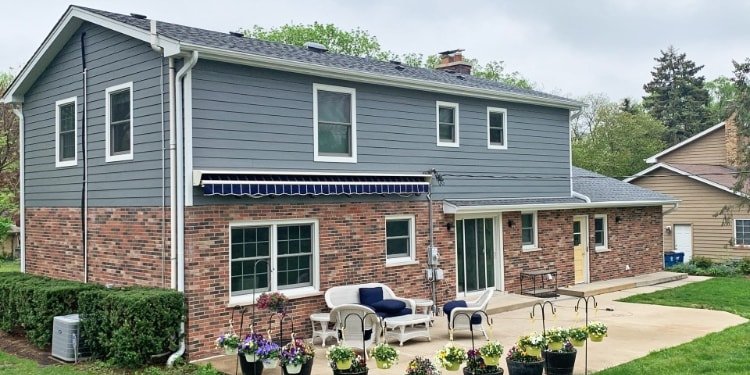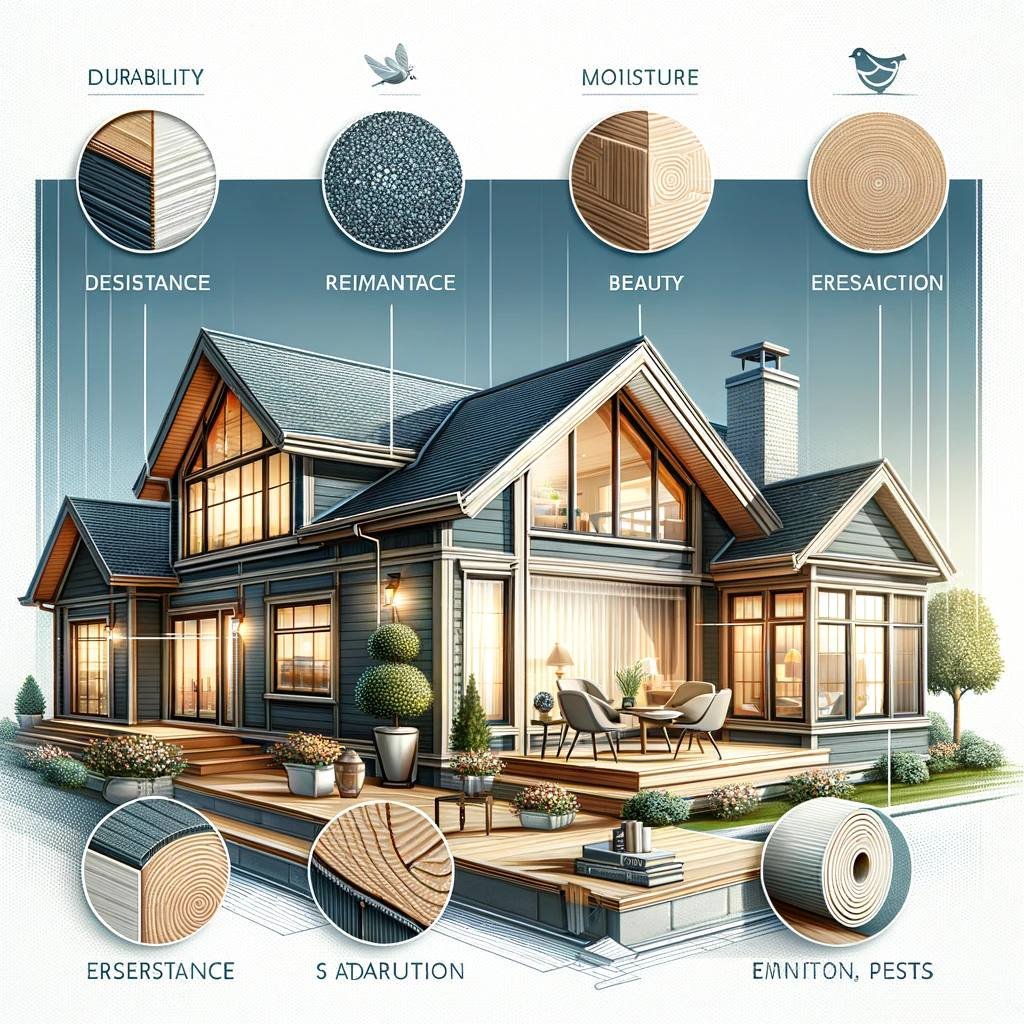How to Choose the Best Color for Siding Replacement?
— by William Johnson Expert in Siding Installation

William Johnson
⭐⭐⭐⭐⭐
Siding Expert over 9 years in Business
Have Questions?
Color is among the first considerations for homeowners when it’s time to update their siding. Color is the main feature when it comes to siding replacement for homes that want to stand out or blend in with the surrounding homes. There are other factors that should not be overlooked, though, such the type of siding and hiring the correct contractor to install it.
Examining the options for the siding type you’re selecting—vinyl, fiber cement, or siding made from processed wood fibers—is the first step in choosing a siding color for your home. However, you also need to take into account everything in your nearby neighborhood, including the color of the houses surrounding you, the color of your roof, and whether your home’s structure includes any brick or stone components.

Would picking a striking hue go against the houses nearby? Perhaps you want your house to look different from other houses in the neighborhood, but how much color is too much? In this group, going with darker hues is typically the preferred choice. Neutral hues are the initial choice for people who just want their house to look good and fit in with the neighborhood. What happens if your house is smaller? It will appear larger when you choose light colors rather than dark ones.
If you’re having trouble deciding on siding color, consider how long you plan to live in the house. If you plan to be there for a short while, consider what colors will improve the curb appeal and increase the home’s sellability soon. Do your preferences shift around a lot? Perhaps you’re considering a color that will make your house “pop” against other buildings since you’re feeling particularly daring right now? What happens if you decide differently in five years? In general, sticking with a neutral hue is your best bet.
Top factors to consider before choosing a siding color
A siding color that appears fantastic on one house may not look good on another. The home’s lighting and architectural design are frequently the most important considerations in this case. Certain dwellings, for instance, are in a clearing with full sun all day, while others are nestled in between a grove of trees and receive little light. Your selection for color is another important consideration that can be weighed against the other two.
The size of the house is another crucial consideration. For a tiny home, a dark color scheme may actually make the space appear smaller. Selecting a pale hue will accentuate its size. We’ll look at a number of variables that affect homeowners’ decisions regarding siding color in the sections that follow

Here are top considerations before choosing a siding color:
Read on to learn how to select siding color palettes that complement your house. The ideal siding color is entirely dependent on the individuals who will be residing in the property. Since we at VIS Exterior have worked with so many clients in a variety of communities and home styles, we are skilled in selecting siding colors for your house that also suit your own tastes. Additionally, colors have an effect on curb appeal, which in turn affects your home’s value.
You should not be concerned if you experience any nervousness when selecting a hue for your home; this is a perfectly normal feeling. You wouldn’t be going through so much stress if it weren’t such a big decision, but know that VIS Exterior is available to assist you. When their project was finished, none of our clients ever felt that they had made the incorrect color choice.
Home’s architecture
Do you own a house with Tudor-style architecture? Since many of them include stone or brickwork in addition to darker roofing shingles, brown, cream, and white hues are typically the most appropriate for the siding and trim. Each thoughtfully counterbalanced the other.
There are a lot of ranch-style homes, and they are frequently decorated with siding colors that range from lighter brown to blue to gray.
The Chicagoland area is also home to many Victorian homes. Due to its versatility, you can find these homes in a range of hues, such as taupe, terra cotta, pale green, light pink, and subtle turquoise.
While a Cape Cod-style home looks to favor blues and grays, colonial architecture’s simplicity goes best with whites and neutrals. Is your house more of a French cottage style? Light blue and light gray are two examples of gentle hues that work well with these dwellings.
We can help you select the ideal siding type to complement your home’s architecture, whether it’s Georgian, craftsman, A-frame, or more modern in design.
Size of your house
Do you have a huge home but are drawn to darker siding colors? Be cautious when going dark because dark siding on large homes can make them appear somewhat overwhelming and even gloomy to some. Select a muted color and refrain from overly ominous décor. On the other hand, a big house may stand out too much if you choose for a bright hue like white with a comparable tone. Once more, neutral is usually the wisest course of action.
The greatest siding color for a smaller home is one that makes it fit in with the others rather than making it stand out as the smallest in the neighborhood. Lighter and neutral colors can aid in the integration of these dwellings.
Roof’s color contrast
The color of your roof has a significant influence on the colors underneath it, therefore it should be taken into account when choosing the color of your siding and trim. Since most roofing materials have a 30-year lifespan, bear this in mind if you want to replace your roof soon. If you decide to alter the color of the shingles, you’ll need to make sure the siding matches the new roof. For instance, lighter siding goes better with a deeper earth tone, like dark brown, than lighter siding, which would clash with lighter colored shingles.
Environment and lighting
Climate
A house that appears cheery and bright in the spring and summer can appear dull in the darker months due to the gloomy late fall and winter months. When selecting a hue that will work well for all seasons, you should consider whether you reside in a location with a harsh environment. Extreme weather conditions can also shorten the siding’s lifespan, so make sure you use sturdy siding made by a reputable manufacturer.
The landscape
The color of your siding is also affected by your landscaping. For instance, the siding’s color will change if your surroundings are a verdant, luscious shade of green in the summer. The leaves of Japanese maples, elderberries, and crabapple trees will have a purple tint rather than a green one, which will also affect the siding color of your home. When selecting the color of your siding, bear in mind that foliage colors might differ significantly amongst homes. Lastly, bright siding colors should be avoided if your property has little to no landscaping because they may make the house stand out too much.
Neighborhood colors
If the style of your home is very different from those around you, that may affect your decision to select a hue. Staying true to your color scheme and avoiding overt attention to detail is usually a good option. Though it’s generally not recommended to use a very bold color, you can still make a statement.
Personal taste
How to pick the right siding color for your house?
Siding Blog
Vinyl siding is one of the most popular house siding materials available, and for good reason. Unlike fiber cement siding, vinyl siding
2023-05-07 / By William Johnson
Cost and available alternatives for house siding are two of the most crucial factors to take into account when selecting your siding. These are your 2024 possibilities.
2023-05-07 / By William Johnson
Color is among the first considerations for homeowners when it’s time to update their siding
2023-05-14/ By William Johnson
Oh, the choices one must make before embarking on a residence makeover! Which material—fiber cement, wood, or vinyl—should be used to make it?
2023-05-13/ By William Johnson
Our Siding Servises
We specialize in custom fIBER Siding and expert siding solutions to transform your home’s exterior
James Hardie Siding Superior energy efficiency that won’t decay or distort with time.
Treated, long-lasting siding with a genuine hardwood appearance and texture.







